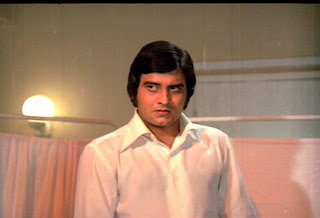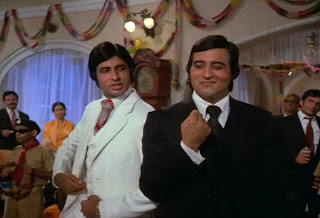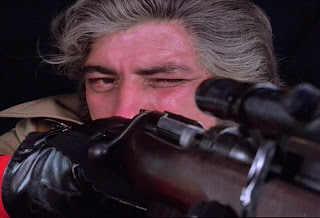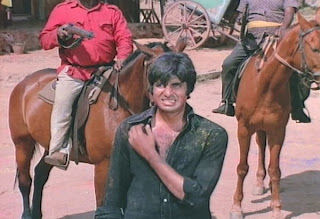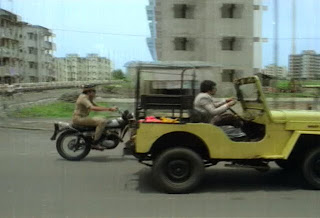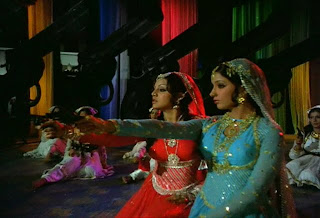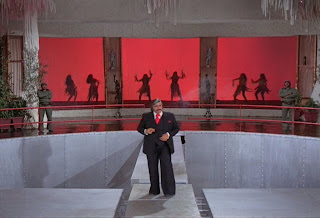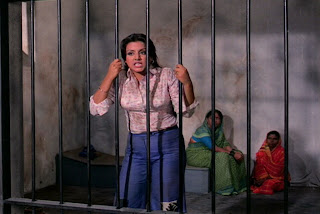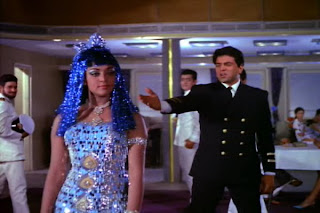
I'm going to take a bit of a different approach to
70's Week 2010. Instead of covering a bunch of different 70's films, I'll mostly be covering one -
Parvarish directed by Manmohan Desai, released in 1977. Not because I think this is
the 70's film and no other film is as important but because I rewatched this recently and it hit me this is everything a 70's film can be, and so much more. It's just really good, and yet it doesn't quite have the name a lot of 70's classics have made for themselves.
So I'll be doing thematical posts of 70's masala traits that Parvarish ("Upbringing") has - to promote it among those who haven't seen it yet and to give those who have a chance to share their love. I mean I guess theoretically some of you might dislike this film or be 'blah' about it. But ..I can't imagine that anybody actually is.
The posts
WILL include spoilers. But you can skim and look at the pictures if you don't want to be spoiled!
First up is the building block to most Manmohan Desai masalas;
the lost-and-found family drama.
Parvarish, like a lot of 70's films, starts from the backstory. A bandit Mangal Singh (Amjad Khan) finally gets nabbed by the police, specifically DSP Shamsher Singh (Shammi Kapoor) just as Mangal's wife has given birth to a baby boy. She asks the DSP to take the baby and make sure Mangal never gets his hands on that baby, so that the boy won't grow up to be a crook like his father. Shamsher Singh takes the baby home and adopts it, the boy Amit (Amitabh Bachchan) growing up alongside his own son Kishan (Vinod Khanna). Due to some confusion, Kishan mistakenly believes he is the son of Mangal, and thus grows up leading a double life as a crook unbeknownst to his family, while Amit becomes a police officer like his adoptive father Shamsher.
Just typing that plot wore me out, as complexity of relations is inherent to these sorts of lost-and-found stories. The idea is always that a child gets separated from their parent(s), for better or worse, and later reunited. This is usually laid out up-front, but sometimes the plot twist is only delivered later (though the audience usually guesses it's coming). In Parvarish, it's never unclear that Amit is Mangal's son, but of course, his ignorance of the fact makes Kishan's double life all the more interesting.

Even if we know the truth, it doesn't take much away from the viewing experience, because Parvarish, as most 70's masalas, is jam-packed with all the required masala ingredients. An awesome villain's lair, car chases, diamonds, songs, romance, comedy.. I think predictability is too often taken to mean bad script-writing, but I think with the case of the lost-and-found story trope, all it adds is anticipation for what's to come. With Parvarish, you want to see what happens when Amit finds out he's Mangal's son, and Kishan discovers he isn't. With Seeta Aur Geeta, you want the twins to meet.
Another common 70's masala trope of "maa ka pyaar", that is, accentuated love of a mother, or a hero's love for his mother, is quite weak with Parvarish. Indrani Mukherjee (also the mother in another Desai classic,
Dharam-Veer) plays the mother who loves both his sons but this love doesn't play a huge part in the story.

The main tension is that between the two brothers, one devoted to serving the law and the other to breaking it. Kishan manages his double life with relative ease, even if there are many close calls to Amit finding out the biggest crimes are run by his very own brother.
Whether upbringing decides a person's character, the film is very clear about. Kishan is a criminal, not because a criminal's blood runs in his veins, but because he is essentially brought up by Mangal Singh. Amit, believing Shamsher to be his father, grows up to believe in following the law.

The awesome reveal of Kishan's double life happens at a hotel apparently named Bhai Bhai (brother brother) - or outside the hotel you have this blinking signs because Manmohan Desai is no euphenism for subtlety, but what about sisters?

Our heroines Neetu Singh and Shabana Azmi share a very tender but goofy sibling relationship, and the fact there's quite a lot of them in the film seems quite rare based on my (limited) 70's film watching. The only other film with sisters in it I can think of is Seeta Aur Geeta, so it certainly feels awesome that this film has some. Go sisters!
Tuesday's post will be about fashion and decorations, so see you then!
 Of course, early 70's were as I understand it, the height of Rajesh Khanna mania. I haven't figured out why yet! Dude's a nice actor, can be charming .. but letters in blood, really? Here he is in Sachaa-Jhutha as a kind-hearted simpleton.
Of course, early 70's were as I understand it, the height of Rajesh Khanna mania. I haven't figured out why yet! Dude's a nice actor, can be charming .. but letters in blood, really? Here he is in Sachaa-Jhutha as a kind-hearted simpleton. Helen item numbers is something that Parvarish lacks and that I haven't therefore discussed. Here she is, trapping a fly in Inkaar. That foxy woman!
Helen item numbers is something that Parvarish lacks and that I haven't therefore discussed. Here she is, trapping a fly in Inkaar. That foxy woman! 70's was also a time for different cinema, or I should say, not-totally-batshit-actionpacked-masala. Here's a screencap from Achanak, which I really need to rewatch because it's very short and is a poetic, interesting Gulzar movie about taking lives and the paradoxes of it. Young Farida Jalal as Vinod Khanna's nurse was suberbly adorable in this. For more on Gulzar, I refer you to Old is Gold's 70's week post about the director/lyricist.
70's was also a time for different cinema, or I should say, not-totally-batshit-actionpacked-masala. Here's a screencap from Achanak, which I really need to rewatch because it's very short and is a poetic, interesting Gulzar movie about taking lives and the paradoxes of it. Young Farida Jalal as Vinod Khanna's nurse was suberbly adorable in this. For more on Gulzar, I refer you to Old is Gold's 70's week post about the director/lyricist. This quote appears ahead of Mera Gaon Mera Desh, and reflects the change from the gentler films of the past to the more violent, action-filled masala of the 70's. Mohandas Karamchand Gandhi, what would you think about being quoted to fuel the career of Bollywood's He-man, Dharmendra?
This quote appears ahead of Mera Gaon Mera Desh, and reflects the change from the gentler films of the past to the more violent, action-filled masala of the 70's. Mohandas Karamchand Gandhi, what would you think about being quoted to fuel the career of Bollywood's He-man, Dharmendra? And so we ride off into the sunset..
And so we ride off into the sunset..

